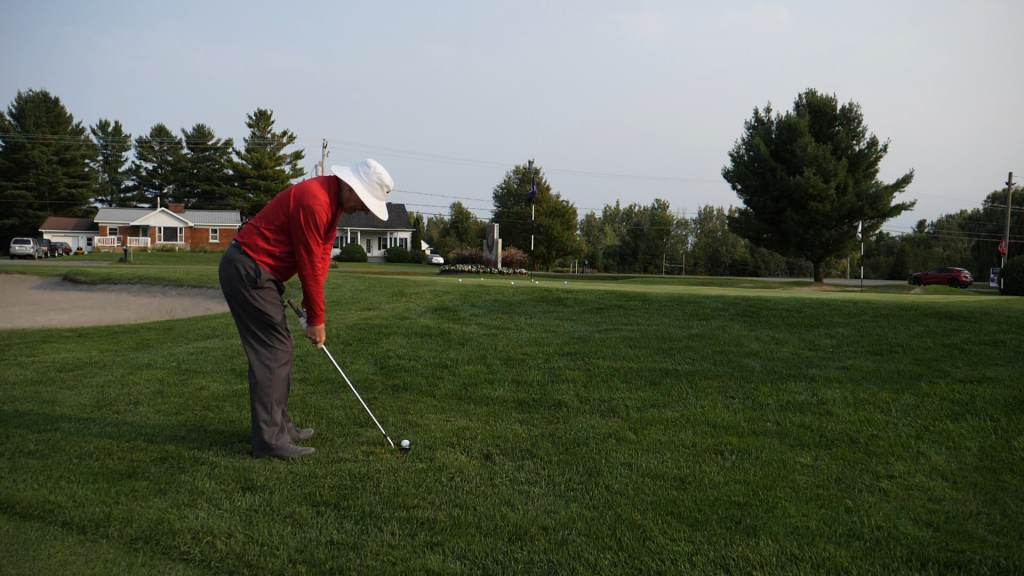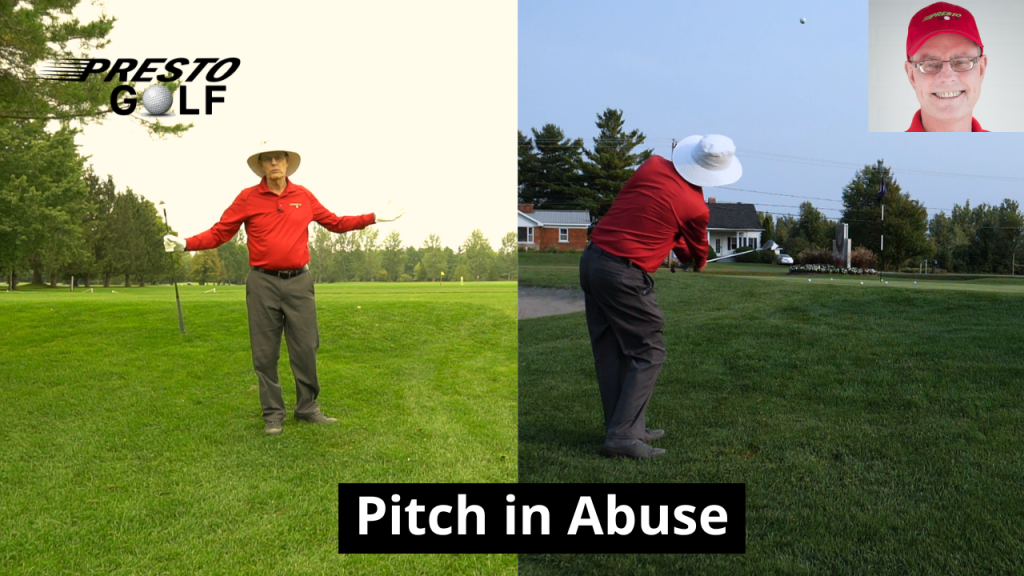A hot tee shot!
The tee shot, especially the one with the driver, is the icing on the cake, the ultimate reward. We all know the expression “Drive for show, putt for dough”. Simply put, the tee shot is a show-stopper, but it doesn’t count for much in the overall score: just 14% of the final score of a round of golf. Nevertheless, the tee shot will give you great satisfaction. Let’s just say, starting off on the right foot on every hole is very motivating, very exciting even.
A tee shot, what exactly is it?
A tee shot is a long game swing that has a high intensity and sends the ball deep into the fairway. Also, a tee shot on a par 3 or a short par 4 can land directly on the green.
The driver always? Definitely not!
1- Too erratic
On a par 4 or 5, there may be too much risk involved in landing the ball with your driver to make it worthwhile. Sometimes it’s best to play conservatively to avoid hazards like trees, water and bunkers. Because it is with the driver that the directional errors and lateral effects (slices and hooks) are the most marked, the most penalizing. And the more powerful the golfer, the narrower the margin of error.
2- Too powerful
If you don’t have enough leeway to safely fly over a body of water or a creek that crosses the fairway, it’s best to play short with a club that’s less powerful than the driver.
Similarly, while your driver will usually get you 200 yards, it’s not the club that will reach a par 3 green of 137 yards, obviously. Your ball will often fly straight over the green. On the next shot, you’ll have a hard time getting the ball to stay on the green, even at close range. Why is that? Because, most of the time, you’ll have no choice but to hit a high shot to a downhill slope.
The driver: useful in spite of everything
Often, apprentice golfers on a driving range (practice range) practice exclusively with the driver. This is a big mistake, as the driver is the most difficult club to master. It is the club that will cause you to develop the most bad habits. I am not suggesting that you sulk with it, I am suggesting that you don’t abuse it.
On the other hand, on the driving range, the driver is very useful for swing diagnosis. The curved trajectories that this wood produces are so pronounced that a golf instructor can logically deduce your mechanical errors without resorting to electronic measuring instruments. Based on his knowledge and experience, he will relate your ball trajectories to your movements, your swing mechanics. Let’s say that the driver has the qualities of its defects. That’s why I’ve affectionately nicknamed it “the revealer”.
The initial setup for a tee shot with the driver
- Use a very high tee so that the ball is almost completely over the head of your wood;
- The ball faces your lead foot and even outside of that foot if, like me, you prefer a higher ball;
- Align your feet square or slightly outward (to the right of the target for right-handers) if your feet are far apart;
- Open the toe of the lead foot toward the target;
- Place the club head “square” to the line of sight and facing your lead breast; in doing so, your club head should be 4 inches behind the ball, more if your ball is outside your lead foot;
- Your weight should be equally distributed on both feet;
- Adopt a more pronounced inverted K posture than usual.
Full swing for a tee shot
The Full Swing is very similar to the Half Swing, but with more body rotation.
- Make your backswing by turning your shoulders and cocking your wrists later;
- Your weight should then be mostly on the inside of the trail foot;
- Your gluteal muscles, especially the one on the trail side, should be contracted;
- At the top of the backswing, your weight should be primarily on the inside of the trail foot, your trail knee has remained in the same position it was in at address, and your lead arm should be at or near full extension;
- Shift your weight back to the lead foot by doing the transitional movement described in the half swing article;
- Start the downward movement by bringing the belly button toward the target;
- Follow-through the ball by letting your body rotation unfold your trail arm and propel your hands toward the target;
- To accentuate the whip effect and, therefore, the distance, keep your head behind the ball as long as possible;
- Finish your swing by letting the club shaft rest on your front shoulder, both elbows bent;
- The trail foot rests on the tips of its toes (its sole points away from the target);
- Stay in this position, with your body straight, to do your feedback (diagnosis).
Additional notes on the full swing
- Beware of poor stance at the top of the backswing (weight on the front foot instead of the trail foot and bent lead elbow instead of extended lead arm);
- A downward swing initiated with the arms prevents lower body rotation: so you must turn toward the target before whipping;
- Make sure your lead scapula rotates completely on both sides, which proves that your whole body has rotated properly;
- It is the muscles of the abdominal belt that give the power (gluteal and oblique muscles), not the muscles of the arms.
The initial setup for a tee shot with the 3 Wood, a hybrid or an iron
- Use a shorter tee allowing half of the ball to extend past your club face;
- The ball faces your lead armpit with a 3 Wood, but faces your lead breast with a hybrid or iron;
- Align your feet square;
- Open the toe of the lead foot toward the target;
- Place the club head “square” to the line of sight and facing your lead breast;
- Your weight should be equally distributed on both feet;
- Adopt an inverted K stance as usual.
The steering wheel and laterality
Imagine yourself behind the steering wheel of your car, with your hands properly placed on either side of the wheel. Now imagine yourself at a street corner about to turn left. To turn left, you’ll have to turn the steering wheel to the left, right? Your right hand is now over your left hand, your forearms crossed. To produce a sideways effect on the ball in golf, you do the same: you turn the steering wheel, cross your forearms. But there’s a but: laterality, which side you hit the golf ball from.
For a right-hander, the brushed effect is crossing your right hand over your left. For a left-handed golfer, it is the opposite, crossing the left hand over the right. The brushed effect (topspin) is like a left turn for a right-hander, but a right turn for a left-hander. And since right-handed golfers face left-handed golfers at address setup, a pull shot for a right-handed golfer goes to the left, but the pull goes to the opposite side, to the right, for a left-handed golfer. Still following me?
That’s why a ball deflecting to the left will be a pull or hook for a righty, but a push or slice for a lefty. Similarly, a ball deflecting to the right will be a push or slice for a righty, but a pull or hook for a lefty.
Drill: Lead Hand Driver
Hold the head of an inverted driver with your lead hand (or a hybrid if the stance is too high), with the lead arm fully extended in front of you, shaft vertical. Swing without a ball with the trail arm under the lead arm. Start the downward swing with the hips and keep the nose behind until the follow-through of without sliding the hips towards the target. This drill will help you extend the arms on either side of the ball and therefore correct “crocodile arms”, i.e. arms bent at impact.


